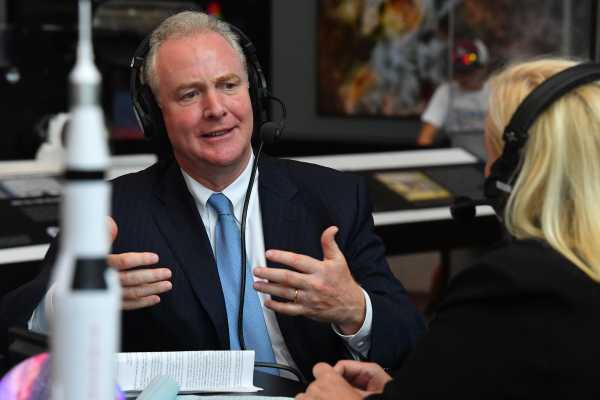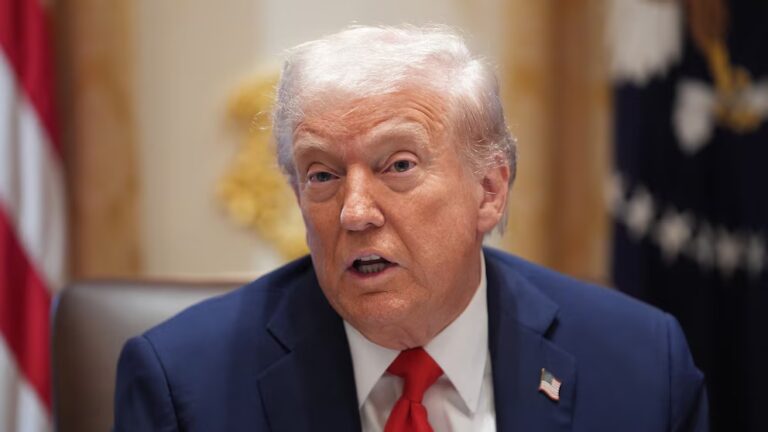
When it comes to government funding for drug research, an interesting paradox currently exists.
While many pharmaceutical companies benefit from federal funding for research, this doesn’t necessarily translate to lower prices for patients who ultimately buy the drugs that are developed. In other words, the government is effectively subsidizing companies’ ability to develop drugs and then charge exorbitant prices for them.
Sens. Chris Van Hollen (D-MD) and Rick Scott (R-FL) want to change that.
Their new bill, first provided to Vox, would require companies that have received research funding from the National Institutes of Health and other federal agencies to follow specific pricing restrictions for the drugs they are selling. If they don’t, they’d incur strict penalties.
“The idea is straightforward,” Van Hollen told Vox. “Taxpayers invested in finding cures and treatments and therefore, taxpayers should have a say in what the prices are.”
The legislation, dubbed the We PAID Act, is the latest attempt from lawmakers to address escalating prescription drug prices. While it would only affect a fraction of new prescription drugs that are sold — an aide for Van Hollen’s office estimated it would apply to 20 to 25 percent of the prescription drugs that go to market after the bill is enacted and wouldn’t apply to any currently on the market — the legislation could still make significant inroads in reducing some drug prices, if passed.
According to Van Hollen’s office, current drugs that would hypothetically be affected, if this law existed when they were being developed, include Humira, a drug for adults with Crohn’s disease, and Enbrel, a drug that treats autoimmune diseases. According to The New York Times, a prescription for Humira currently clocks in at $38,000 a year.
The bipartisan nature of the bill could bode well for its advancement, and highlights how much of a priority this topic has become for voters, as well as lawmakers across the ideological spectrum. Van Hollen and Scott’s bill joins an expanding slate of proposals, underscoring the growing push in both chambers of Congress to actually pass legislation that could rein in Big Pharma.
What the We PAID Act would do
The US is known for having some of the highest prescription drug prices in the world, and this bill is one of several making its way through the upper chamber that attempts to address this problem. Specifically, Van Hollen and Scott’s plan tackles the issue by targeting drug companies that have benefitted from taxpayer money.
Under the We PAID Act, drugs that have patents clearly tied to NIH research would be required to offer reasonable prices to consumers. These patents include those held by the federal government that are licensed out to private companies, and patents held by individuals that disclose “government support” in the application.
In order to determine “reasonable” pricing for different drugs, the legislation sets up a couple different mechanisms:
This committee would specifically include a wide range of stakeholders in order to prevent too much industry influence, Van Hollen told Vox. “We want to make sure that this was not stacked by industry people,” he said. Presently, it’s still slightly unclear how much lower the “reasonable” list price would be than a company’s existing price, but the process to arrive at that figure is intended to be a transparent one, Van Hollen noted.
Companies that do not adhere to the list price that’s ultimately determined would be subject to a couple different penalties: For one, they would lose any exclusive rights to a particular drug, meaning competitors could then produce a generic version of the drug to sell. Additionally, they would be barred from entering into future licensing agreements on patented technology, meaning they couldn’t leverage advancements that have been developed by the NIH or other federal money.
While this bill is only applicable to a segment of drugs, it could still have some serious impact in bringing down costs for some of the most expensive drugs out there, says Ameet Sarpatwari, a health policy expert at Brigham and Women’s Hospital, who provided assistance on the bill.
“NIH is the largest single funder of biomedical research in the world,” he told Vox. “The real question is what are we getting in return for the contribution companies receive?”
As Sarpatwari notes, the reach of NIH funding is expansive. According to a 2018 study, all 210 drugs that were approved by the Food and Drug Administration between 2010 to 2016 relied heavily on some kind of NIH support. (Not all would necessarily be affected by the bill, but an estimated 25 percent of all drugs that are launched would be.)
Lowering prescription drug prices is one of the few issues with momentum in Congress
Reducing prescription drug prices is among a narrow set of issues that members of the House, Senate, and White House are all interested in working on. Whether they can collectively agree on a policy solution, however, is another matter.
Van Hollen and Scott’s bill, because it has bipartisan support, is among the measures that could see some momentum. Another bill from Sens. Chuck Grassley (R-IA) and Ron Wyden (R-OR), which would put a cap on out-of-pocket costs Medicare recipients pay for prescription drugs, has also recently advanced out of the Senate Finance Committee. And House Democrats are expected to unveil a bill of their own later this fall, though it’ll likely be too progressive for Senate Republicans.
If members of both parties could work something out, it would be an effort that resonates heavily with voters, who’ve showed broad support for lowering prescription drug costs in poll after poll. According to a February survey by the Kaiser Family Foundation, 63 percent of Americans think there should be more regulation of prescription drug prices.
Although many Republicans remain reluctant to impose more regulation on the health care industry, the demand from voters on drug prices is becoming too urgent to ignore.
Scott and Van Hollen’s bill shows lawmakers on both sides are looking for ways to answer that demand — some in more sweeping ways than others.
Sourse: vox.com






